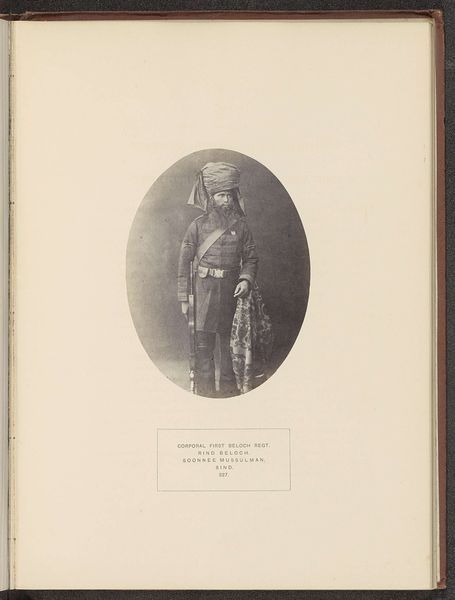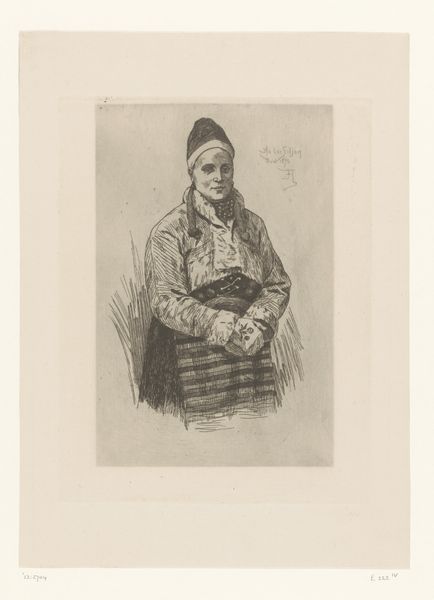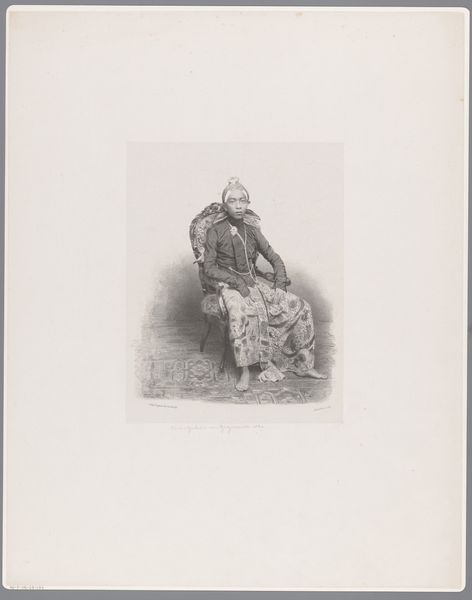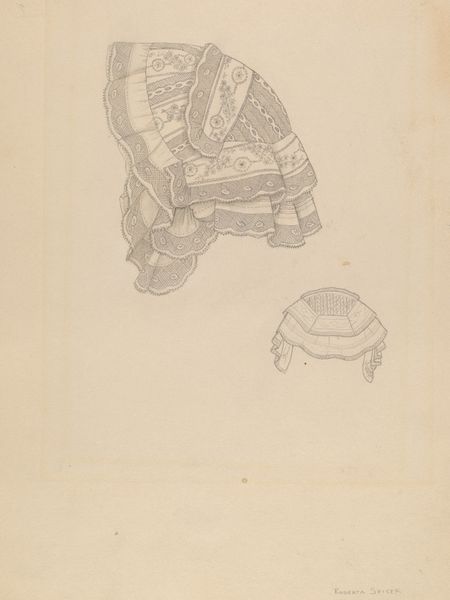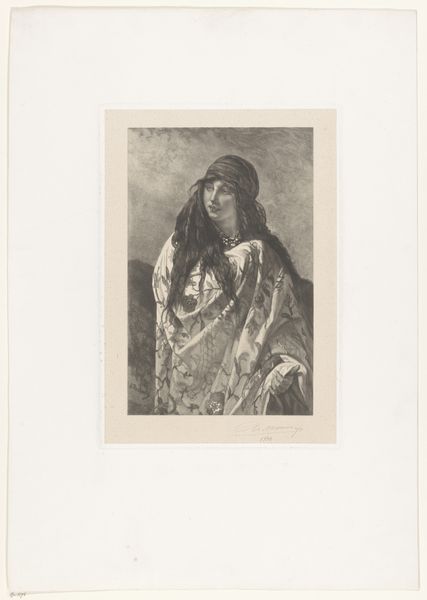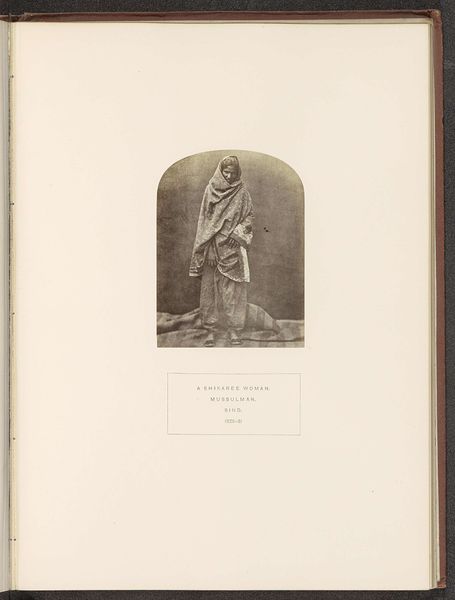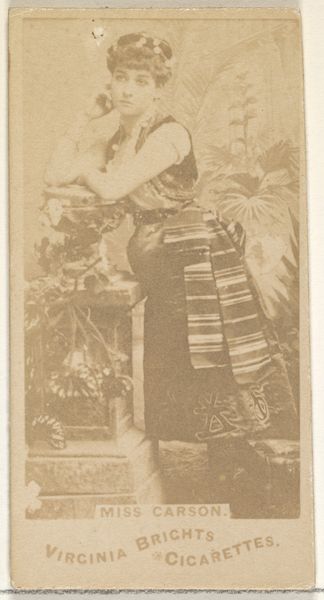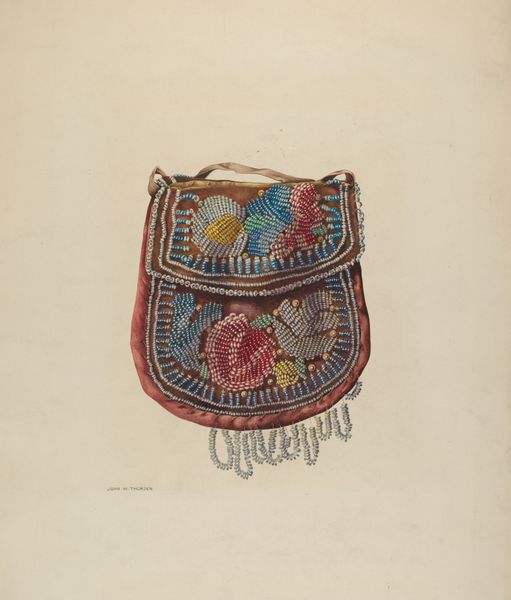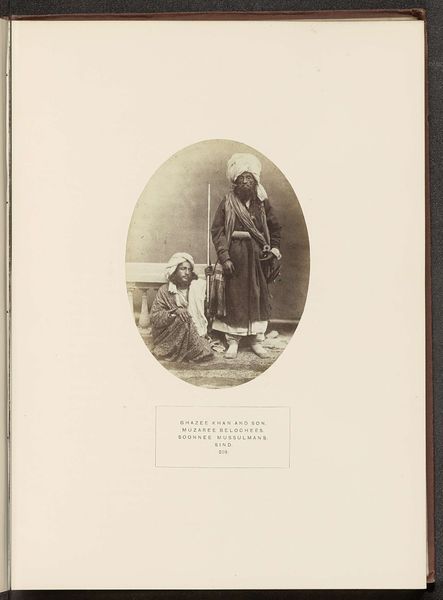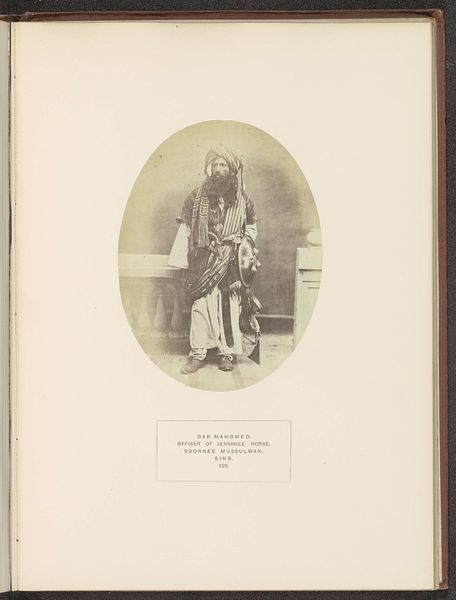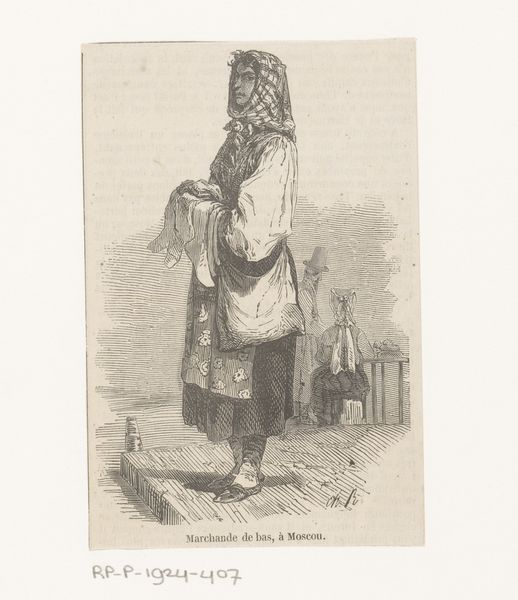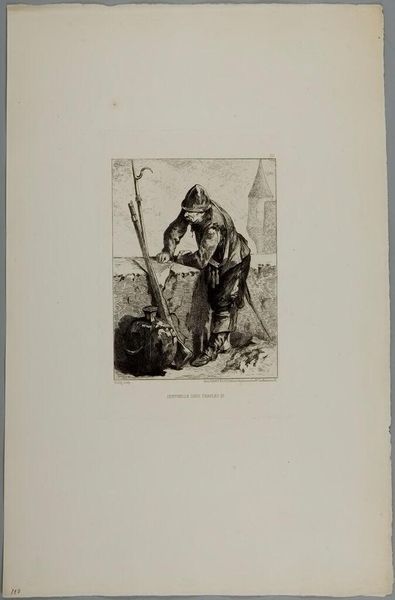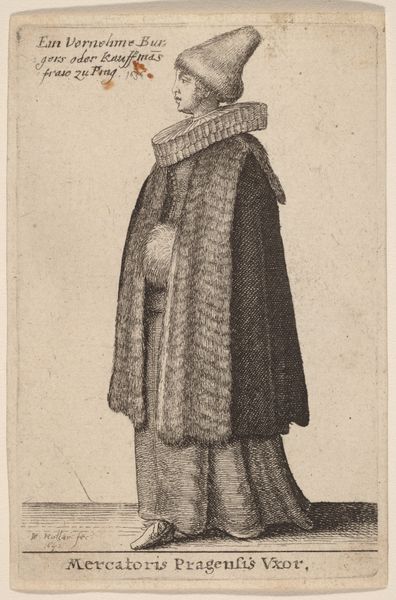
Geborduurd zadel uit India tentoongesteld op de Great Exhibition of the Works of Industry of All Nations van 1851 in Londen 1851
0:00
0:00
photography
#
photography
#
orientalism
Dimensions: height 220 mm, width 165 mm, height 348 mm, width 254 mm
Copyright: Rijks Museum: Open Domain
Curator: This photograph by Hugh Owen captures an exquisitely embroidered saddle from India, showcased at the Great Exhibition of 1851 in London. The image freezes a moment rich with imperial undertones, speaking volumes about power, exoticism, and the visual representation of colonized cultures. Editor: Wow, my first impression is all velvet ropes and hushed whispers. It has such a serious formality about it—like a prized pet at a very stern tea party. There's something deliciously theatrical in how carefully it's presented. Curator: The meticulous composition certainly lends itself to that feeling. Owen employs photography—still a relatively new medium at the time—to create a visual record of objects displayed, emphasizing their perceived value and craftsmanship within the context of the exhibition. We should consider how objects like these functioned as propaganda. Editor: Absolutely! Thinking about it now, it is totally propaganda! It feels a bit like staring into a Victorian curio cabinet. What stories might it tell of the people who created such finery versus those who displayed it as spoils? And the craftsmanship does catch the eye – all those tassels look just so tempting to touch. Curator: Exactly. And beyond pure aesthetics, situating this photograph in its historical moment encourages discussions about colonialism, trade, and the construction of the "Orient" through a Western lens. How did exhibiting objects such as this saddle shape public perception in Britain? And how does that perception resonate today? Editor: It really does feel heavy. I get such a sense of history hanging off of it, layered meaning—the real, complex lives that contributed to its being, versus the distilled idea of it that landed at the Great Exhibition. Curator: Reflecting on Owen's photograph allows us to unravel a complex network of relations. It forces us to grapple with the exhibition’s role in solidifying Britain's imperial identity and framing colonized regions as sites of material wealth ripe for exploitation. Editor: I think my take away will be to approach visual histories and photography always bearing in mind the context they originate in and all the assumptions implicit in them. Thanks!
Comments
No comments
Be the first to comment and join the conversation on the ultimate creative platform.
